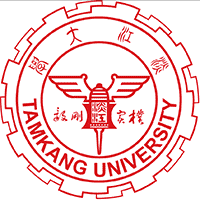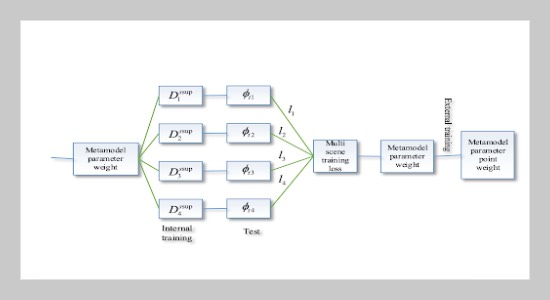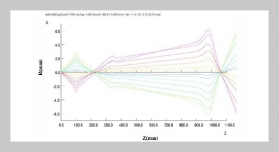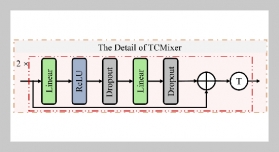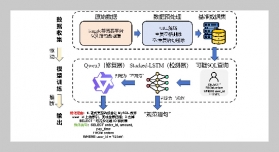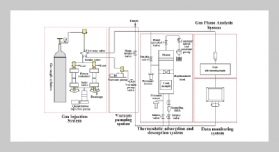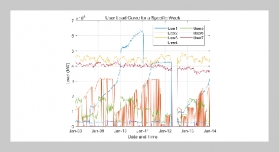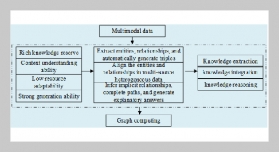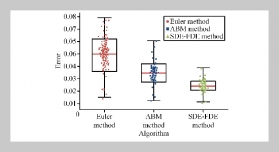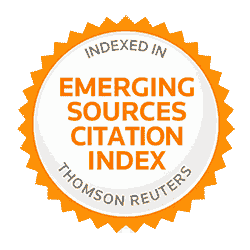- [1] H. J. Kim, M. S. Seo, and D. Park, (2021) “Factors influencing intention to intervene in elder abuse among nursing students" PeerJ 9(4): e12079. DOI: 10.7717/peerj.12079.
- [2] Y. Zhang, J. Zeng, Y. Li, and et al., (2021) “Convolutional Neural Network-Gated Recurrent Unit Neural Network with Feature Fusion for Environmental Sound Classification" Automatic Control and Computer Sciences 55(4): 311–318. DOI: 10.3103/S0146411621040106.
- [3] A.Kulikajevas, R. Maskeliunas, and R. Damaeviius, (2021) “Detection of sitting posture using hierarchical image composition and deep learning" PeerJ Computer Science 7: e442. DOI: 10.7717/peerj-cs.442.
- [4] L.LiuandJ.Yang,(2024)“Exploringthepathtoimprove the quality of student management education based on knowledge graph and NB-IoT architecture" Journal of Electrical Systems 20(4s): 212–225.
- [5] L. Yang, (2024) “Application of online teaching-based classroom behavior capture and analysis system in student management" Journal of Intelligent Systems 33(1): 20230236. DOI: 10.1515/jisys-2023-0236/html.
- [6] S. Song and F. Wang,(2021) “Innovative research on the development of online education mode of internet thinking based on the discrimination of learning attention under the analysis of head posture" Scientific Programming 2021(1): 7183278. DOI: 10.1155/2021/7183278.
- [7] M. Li, L. Tang, L. Ma, H. Zhao, J. Hu, and Y. Wei, (2023) “An analysis model of learners’ online learning status based on deep neural network and multi-dimensional information fusion" CMES-Computer Modeling in Engineering & Sciences 135(3): DOI: 10.32604/cmes.2023.022604.
- [8] Z. Shou, Y. Li, D. Li, J. Mo, and H. Zhang, (2024) “Research on knowledge tracing-based classroom network characteristic learning engagement and temporal-spatial feature fusion" Electronics 13(8): 1454. DOI: 10.3390/electronics13081454.
- [9] L. Qianqian, W. Qian, X. Boya, L. Churan, X. Zhenyou, P. Shu, and G. Peng, (2022) “Research on be havior analysis of real-time online teaching for college stu dents based on head gesture recognition" IEEE Access 10: 81476–81491. DOI: 10.1109/ACCESS.2022.3192349.
- [10] S. Tang, Z. Pan, G. Hu, Y. Wu, and Y. Li, (2022) “Meta knowledge and Multi-Task Learning-Based Multi-Scene Adaptive Crowd Counting" Sensors 22(9): 3320. DOI: 10.3390/s22093320.
- [11] G. Lu, K. Xie, and Q. Liu, (2022) “What influences student situational engagement in smart classrooms: Perception of the learning environment and students’ motivation" British Journal of Educational Technology 53(6): 1665–1687. DOI: 10.1111/bjet.13204.
- [12] N. Alruwais and M. Zakariah, (2023) “Student engagement detection in the classroom using a machine learning algorithm" Electronics 12(3): 731. DOI: 10. 3390/electronics12030731.
- [13] C. Pabba and P. Kumar, (2024) “A vision-based multi cues approach for individual students and overall class en gagement monitoring in smart classroom environments" Multimedia Tools and Applications 83(17): 52621 52652. DOI: 10.1007/s11042-023-17533-w.
- [14] L. Wei, F. Wang, and L. Wan,(2024)“AI-Enabled Learning Engagement Assessment for Smart Classrooms: Ap plications, Trends and Opportunities" Journal of Intelligence and Knowledge Engineering 2(4): 65.
- [15] S. N. Karimah and S. Hasegawa,(2022)“Automaticen gagement estimation in smart education/learning settings: a systematic review of engagement definitions, datasets, and methods" Smart Learning Environments 9(1): 31. DOI: 10.1186/s40561-022-00212-y.
- [16] V. Radosavljevic, S. Radosavljevic, and G. Jelic, (2022) “Ambientintelligence-based smart classroom model" Inter active Learning Environments 30(2): 307–321. DOI: 10.1080/10494820.2019.1652836.
- [17] J. Xu, J. Li, and J. Yang, (2024) “Self-regulated learning strategies, self-efficacy, and learning engagement of EFL students in smart classrooms: A structural equation modeling analysis" System 125: 103451. DOI: 10.1016/j.system.2024.103451.
- [18] A. Kaur, M. Bhatia, and G. Stea, (2022) “A survey of smart classroom literature" Education Sciences 12(2): 86. DOI: 10.3390/educsci12020086.
- [19] A. Badshah, A. Ghani, A. Daud, A. Jalal, M. Bilal, and J. Crowcroft, (2023) “Towards smart education through the internet of things: A survey" ACM Computing Surveys 56(2): 1–33. DOI: 10.1145/3610401.
- [20] Y. Zhang and D. Li, (2024)“Human-machineinteraction with intelligent machine learning algorithms for smart classrooms" Australian Journal of Electrical and Electronics Engineering: 1–13. DOI: 10.1080/1448837X.2024.2420519.
- [21] Z. Qianyi and L. Zhiqiang, (2023) “Research on multimodal-based learning evaluation method in smart classroom" Learning and Motivation 84: 101943. DOI: 10.1016/j.lmot.2023.101943.
- [22] R. Alubady, T. A. Diame, H. Sabah, H. H. Jameel Mahdi, M. Saleem, K. Cengiz, and S. Yassine, (2023) “Anticipating Student Engagement in Classroom through IoT-Enabled Intelligent Teaching Model Enhanced by Machine Learning" Fusion: Practice & Applications 13(1): DOI: 10.54216/FPA.130115.
- [23] N. M. Alruwais and M. Zakariah, (2024) “Student Recognition and Activity Monitoring in E-Classes Using Deep Learning in Higher Education" IEEE Access 12: 66110–66128. DOI: 10.1109/ACCESS.2024.3354981.
- [24] A. Alam. “Data-Driven Instructional Practices: Using Behavior Detection and Model Assignment Techniques to Inform Teaching Strategies for School Edu cation”. In: 2023 International Conference on Quantum Technologies, Communications, Computing, Hardware and Embedded Systems Security (iQ-CCHESS). IEEE, 2023, 1–8. DOI: 10.1109/iQ-CCHESS56596.2023.10391777.
- [25] N. Prameela, M. S. Das, and R. D. Borreo, (2024) “Multi-head network-based student behaviour prediction with feedback generation for enhancing classroom engagement and teaching effectiveness" International Journal of Information Technology and Computer Science 16(5): 81–100.
- [26] W. Meng, L. Yu, and Y. Zhu, (2024) “Quality improve ment model of English teaching in universities based on big data mining" Journal of Electrical Systems 20(3s): 506–518.
- [27] S. Chen, J. Lin, Z. Lan, H. Yuan, and Y. Zha, (2023) “The application of smart classroom management system to cultivate college students’ independent learning ability in higher education institutions" Frontiers in Educational Research 6(15): DOI: 10.25236/FER.2023.061520.
- [28] H. Wang. “Prediction of learning outcome based on decision tree algorithm in blended teaching”. In: Proceedings of the 2023 International Conference on Information Education and Artificial Intelligence. IEEE, 2023, 416–420. DOI: 10.1145/3660043.3660118.
- [29] T.-Y. Lin, M. Maire, S. Belongie, J. Hays, P. Perona, D. Ramanan,andP.Dollár.“Microsoft COCO: Common Objects in Context”. In: Proceedings of the European Conference on Computer Vision (ECCV). 2014, 740–755. DOI: 10.1007/978-3-319-10602-1_48.
- [30] S. Li, J. Shen, and J. Sun. “Application of parallel H mine algorithm in smart campus students”. In: EAI International Conference, Big IoT-EDU. Cham: Springer Nature Switzerland, 2023, 237–247. DOI: 10.1007/978 3-031-63142-9_24.
- [31] H. Zhang, (2024) “Design of students’ learning state evaluation model in online education based on double improved neural network" Journal of Ambient Intelligence and Humanized Computing 15(4): 2467–2480. DOI: 10.1007/s12652-024-04765-3.
- [32] D. Jin, (2024) “Innovation and expansion of neural system-based teacher evaluation management mechanism in the academy" International Journal of Interdisciplinary Telecommunications and Networking (IJITN) 16(1): 1–16. DOI: 10.4018/IJITN.360650.
- [33] T. Ganesan, (2021) “Integrating artificial intelligence and cloud computing for the development of a smart education management platform: Design, implementation, and performance analysis" International Journal of Engineering & Science Research 11(2): 73–91.
- [34] S. Kodadi, (2022) “Integrating statistical analysis and data analytics in e-learning apps: Improving learning pat terns and security" International Journal of Applied Science Engineering and Management 16(4):
- [35] N. Harikumar. “Predicting the academic performance of students using a modified decision tree based genetic algorithm”. In: 2024 Second International Conference on Data Science and Information Systems (ICDSIS). 2024. DOI: 10.1109/ICDSIS61070.2024.10594426.
- [36] L. G. Rajya. “IoT-based weighted K-means clustering with decision tree for sedentary behavior analysis in the smart healthcare industry”. In: 2024 Second International Conference on Data Science and Information Systems (ICDSIS). 2024. DOI: 10.1109/ICDSIS61070.2024.10594075.
